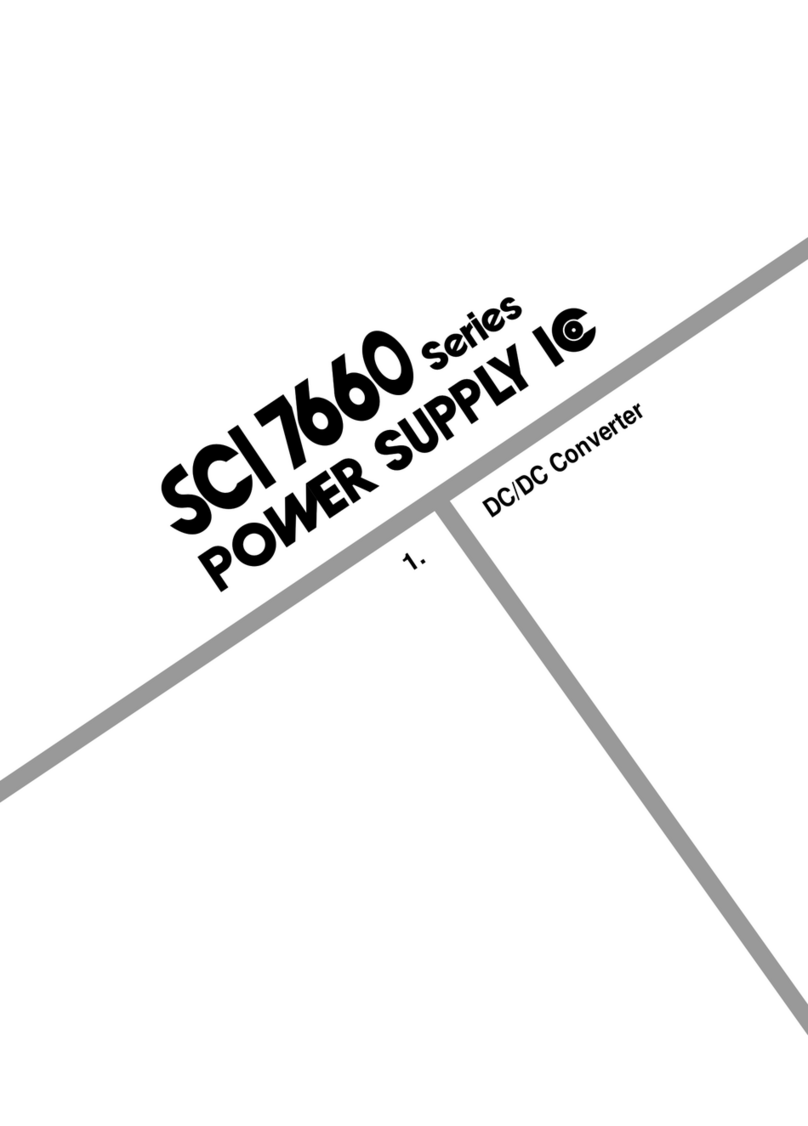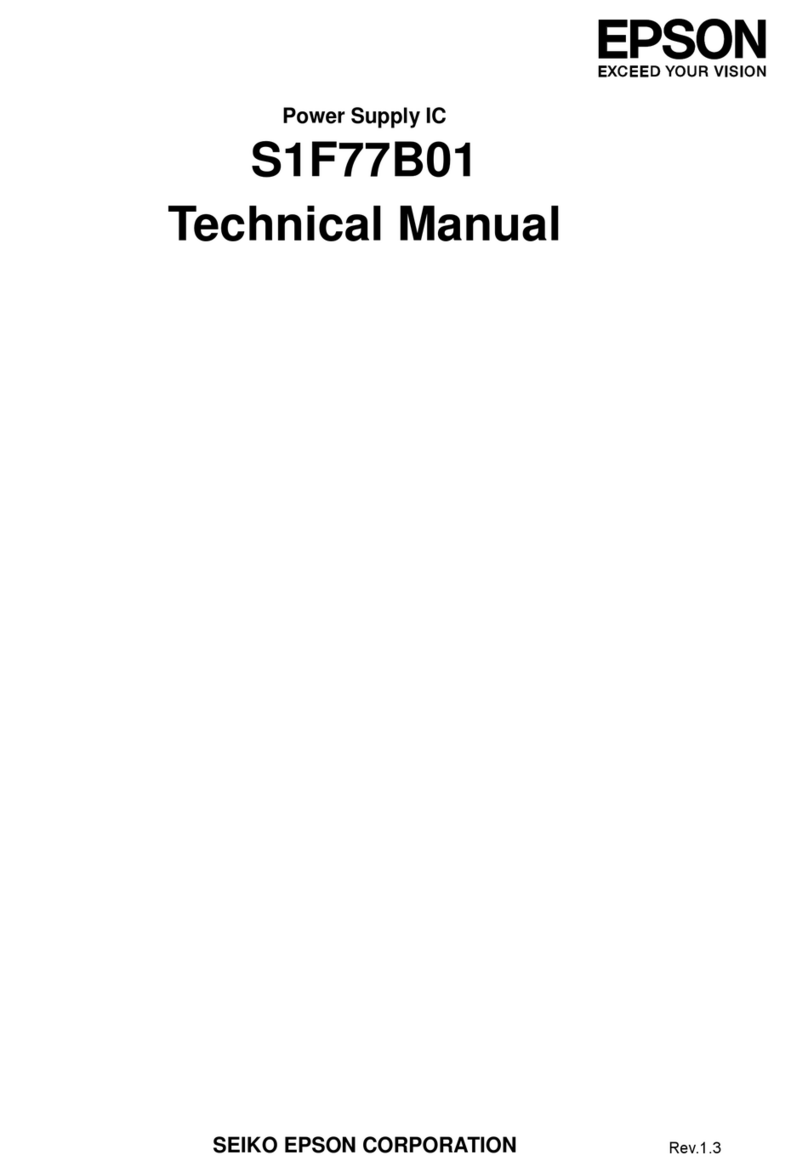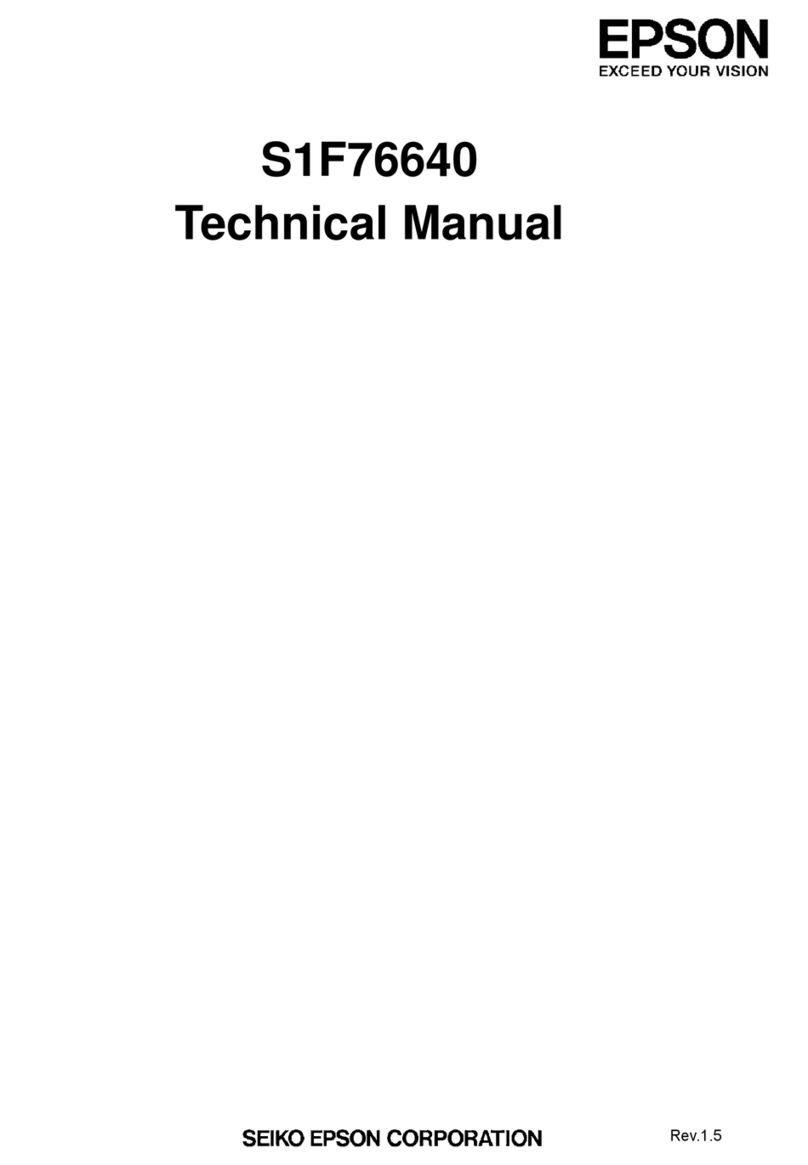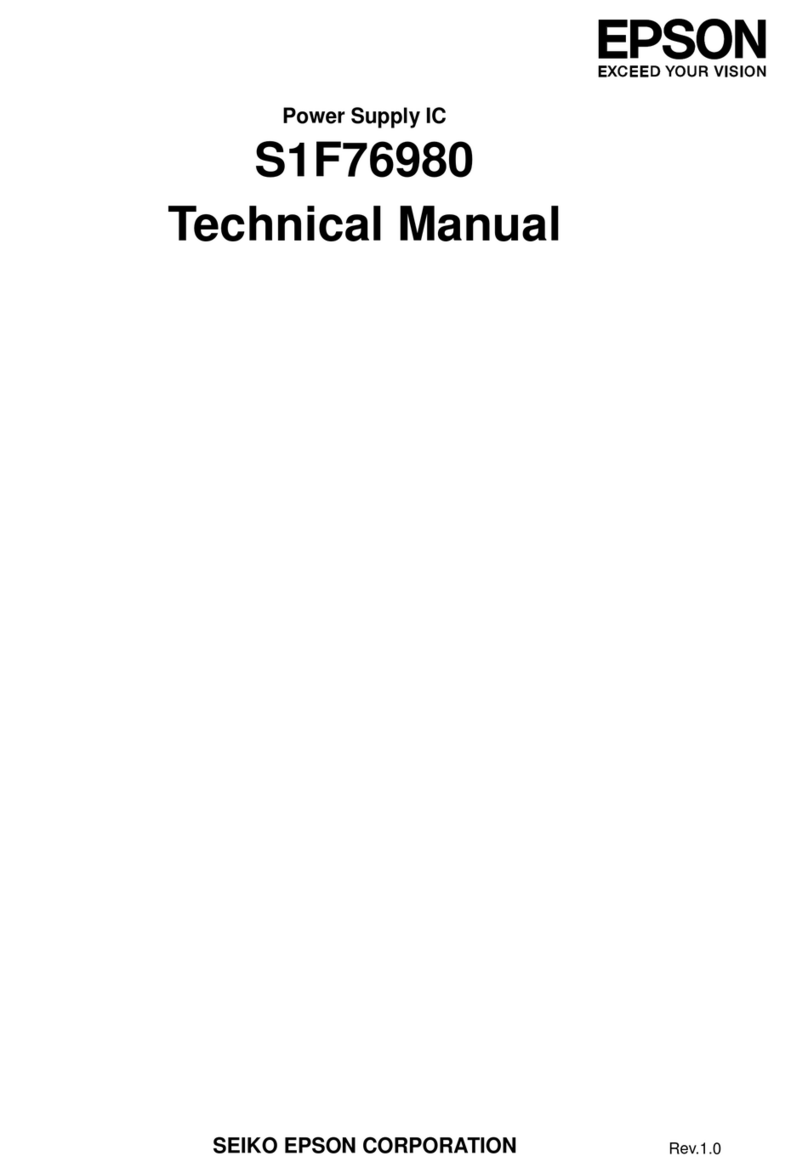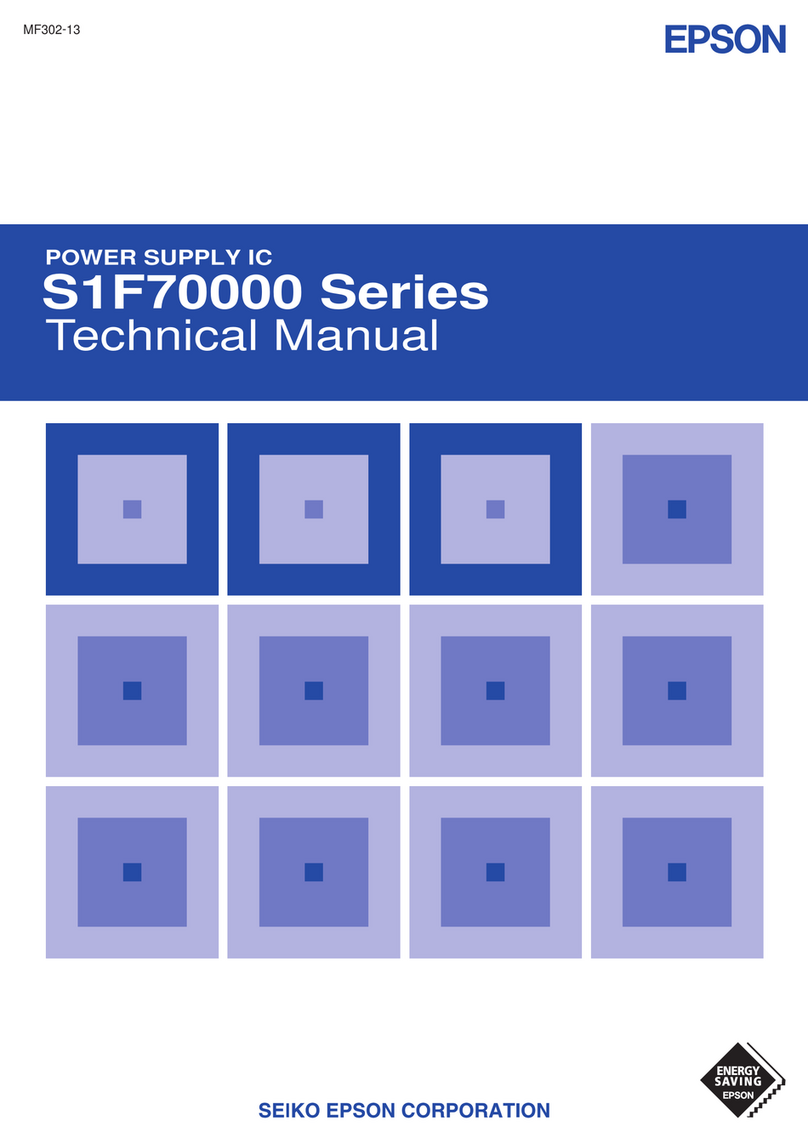SCI7661 Series
SCI7000 Series EPSON 2–1
Technical Manual
DC/DC Converter
& Voltage Regulator
DESCRIPTION
The SCI7661 Series is a highly effecient CMOS DC/
DC converter for doubling or tripling an input voltage.
It incorporates an on-chip voltage regulator to ensure
stable output at the specified voltage. The SCI7661 Se-
ries offers a choice of three, optional temperature gradi-
ents for applications such as LCD panel power supplies.
The SCI7661C0B is available in 14-pin plastic DIPs, the
SCI7661M0B, in 14-pin plastic SOPs, and the
SCI7661MBB in 16-pin plastic SSOPs.
FEATURES
• 95% (Typ.) conversion efficiency
• Up to four output voltages, VO, relative to the input
voltage, VI
• On-chip voltage regulator
• 20mA maximum output current at VI= –5V
• Three temperature gradients––0.1, 0.4 and 0.6%/°C
• External shut-down control
•2µA maximum output current when shut-down
• Two-in-series configuration doubles negative output
voltage.
• On-chip RC oscillator
• SCI7661C0B ................pladtic DIP-14 pin
SCI7661M0B...............pladtic SOP5-14 Pin
SCI7661MBB ..............pladtic SSOP2-16 pin
VDD
Voltage
multiplier
(1)
Voltage
multiplier
(2)
Oscilator
Reference
voltge
generator
Temperature
gradient
selector
Voltage regulator
TC1
TC2
RV
POFF
VREG
VO
VI
OSC2
OSC1
CAP1+
CAP1–
CAP2+
CAP2–
Multiplication
stage Stabilization
stage
BLOCK DIAGRAM
APPLICATIONS
• Power supplies for LCD panels
• Fixed-voltage power supplies for battery-operated
equipment
• Power supplies for pagers, memory cards, calculators
and similar hand-held equipment
• Fixed-voltage power supplies for medical equipment
• Fixed-voltage power supplies for communications
equipment
• Power supplies for microcomputers
• Uninterruptable power supplies






